Chance of success on Nanga Parbat “15 to 20 percent”
“For me, this is completely new ground.” David Goettler is looking forward to his upcoming winter expedition that, after Christmas, will take him and the Italian climbers Simone Moro and Emilio Previtali to the 8000er Nanga Parbat in Pakistan. “Until now I have gained experience in winter climbing only in the Alps, never in the Himalayas or in Karakoram”, says the 35-year-old climber from Munich when I meet him in my hometown Cologne this week. David has intensified the endurance training since Simone’s invitation at the end of September to accompany him to Nanga Parbat. You cannot train coldness, says David. “It makes no sense sitting in the refrigerator for three days.”
![]() read more
read more
Kammerlander seriously injured in car crash
The South Tyrolean mountaineer Hans Kammerlander has been involved in a car accident with a tragic end near his home village Sand in Taufers. According to media reports from South Tyrol, a 21-year-old man lost control of his car. It grazed three oncoming cars before it crashed head-on into a van that was driven by Kammerlander. The 21-year-old died at the scene. Kammerlander and four other persons, who were injured too, were taken to hospital. Stol.it reports that Kammerlander broke his right leg. The 56-year-old was under shock, it said. His van was completely destroyed.
![]() read more
read more
Andy Holzer: “At 7500 meters everyone is disabled”
The blind can see, just in a different way. This is demonstrated by the Austrian Andy Holzer. The 47-year-old from Lienz in East Tyrol has been blind since birth. But that does not prevent him from rock climbing, ski touring or even mountaineering in the Himalayas. 16 August 1975 was a special day in Andy’s life: As a nine-year-old boy he was allowed for the first time to climb a rocky mountain together with his parents. After he had dragged himself for hours through the debris he turned to rock climbing and suddenly he regarded his father as climbing too slow. His mother couldn’t follow them. “I felt like someone had freed me from chains”, Andy recalled, as we recently met during the International Mountain Summit in Brixen.
Andy, the first question is probably always the same. How do you manage to climb a rock face without being able to see anything?
I don’t climb without seeing it. That would not work.
Please explain what you mean!
![]() read more
read more
First ascent for Ines Papert
And it was a first ascent at all! On 13 November Ines Papert was the first person who set foot on the 6718-meter-high Pig Pherado Shar in Nepal, also known as Likhu Chuli I. Billi Bierling, staff member of the legendary Himalayan chronicler Elizabeth Hawley, writes me that the Frenchwoman Cecile Barbezat and Nawang Dorje Sherpa on 21 October 1960 were at the top of Likhu Chuli II, “which conversely means that Ines made the first ascent of Likhu Chuli I.” This was the result of a research that her French colleague Rodolphe Popier made in the library of the French Alpine Club (Club Alpin Français).
![]() read more
read more
Messner: “That was typically Ueli Steck”
Actually I wanted to ask Reinhold Messner these questions during the International Mountain Summit in Brixen. But a planned press conference was cancelled and the 69-year-old left the venue in no time at all, for whatever reason. But I had not to wait a long time for the South Tyrolean. He came to me – in a way. Last weekend the most famous mountaineer of the world gave a lecture in my home town of Cologne. Before the event started Messner answered my questions.
Reinhold Messner, recently you visited Pakistan, a few months after terrorists had shot eleven climbers at the Diamir basecamp on Nanga Parbat. Describe the atmosphere down there!
The mountain has not changed, but the connections are much worse than I thought. The terrorists were contract killers close to the Taliban, paid to carry out a bloodbath. Originally they had a different target. A great festival with polo games etc. was cancelled, probably because the organizers were worried that something might happen. Then the hit squad turned to Nanga Parbat. After the assault the killers took their money and disappeared. Some of them have been arrested, but nobody knows who has been the principal. On the one hand the terrorists wanted to hit the north of Pakistan, the local tourism, which collapsed by 90 percent. But they also wanted to hit the western world. Fortunately there have not been more victims. There were more than 60 people on Nanga Parbat, but most of them were at the high camps then.
![]() read more
read more
Destivelle: “Crazy what’s happening on Everest”
She looks younger than she really is (53 years) and her eyes twinkle when she is talking about climbing. 20 years ago Catherine Destivelle of France was a star of the climbing scene: Inter alia she soloed the classical north faces of Eiger, Matterhorn and Grand Jorasses, all of them in winter. She free-climbed the more than 6000-meter-high Nameless Tower in the Karakoram. (If you want to get an impression of her style of climbing, watch the amazing video below!) After the birth of her son Victor in 1997 she scaled down her climbing activities. I talked to Catherine on a hike during the International Mountain Summit (IMS) in Brixen in South Tyrol.
Catherine, are you still climbing?
Yes, less, but I’m still climbing. I like it. When I have time or holiday, I do it several times a week.
When you did your great climbs, in the 1980s and beginning of the 90s, you were a pioneer of women climbing. What has changed since then?
I think it’s a normal evolution. Women climbers of today are better than in our times, because they are training since their youth. Climbing has become a real sport. In my day it just had started to be a sport, but wasn’t really.
![]() read more
read more
Siegrist: Eiger North Face is largely exhausted
Hinterstoisser Traverse, Swallows Nest, Death Bivouac. When I was a boy of ten I sat on holidays in Grindelwald using my binoculars to study the Eiger North Face. I had devoured “The White Spider”, Heinrich Harrer’s well-known book. I was so fascinated that I got up at night and looked on the route for bivouac lights. On this Wednesday 75 years ago the Eiger North Face was climbed successfully for the first time. The four pioneers of 1938 are dead. The last of the German-Austrian team who died was Harrer in 2006.
I ring Stephan Siegrist up. The 40-year-old mountaineer from Switzerland has a special relationship to the Eiger North Face. He has already climbed the wall 29 times, opened two new extremely hard routes together with his compatriot Ueli Steck – and climbed on the trails of the quartet of 1938.
Stephan, 75 years ago the Germans Anderl Heckmair and Ludwig Vörg and the two Austrians Heinrich Harrer and Fritz Kasparek climbed the Eiger North Wall for the first time. What do think about their performance?
For me it’s still one of the greatest things that have ever been made in the Alps. You have to imagine that the strain was very great. They knew that many climbers before had died in the wall. And climbing it with the material of these former days was truly heroic.
![]() read more
read more
Barrier-free Everest
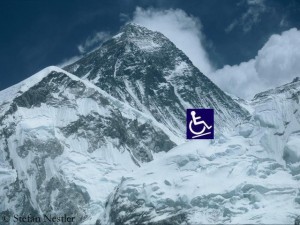 A permit for a video interview broadcasted live from the summit of Mount Everest via smartphone costs about $ 2000. We know that since this spring, when the Briton Daniel Hughes did it this way answering questions of the BBC– without permission, as it turned out later. The Nepalese Tourism Ministry was not amused. Hughes could be banned from obtaining climbing permits for ten years or banned from entering the country for five years. But I’m sure that meanwhile both parties have come to an amicable agreement on a special Everest smartphone tariff. How fortunate that I call my old friend Chomolungma from only 50 metres above sea level. Quite legally, only the NSA is listening too. It takes me three attempts to be successful:
A permit for a video interview broadcasted live from the summit of Mount Everest via smartphone costs about $ 2000. We know that since this spring, when the Briton Daniel Hughes did it this way answering questions of the BBC– without permission, as it turned out later. The Nepalese Tourism Ministry was not amused. Hughes could be banned from obtaining climbing permits for ten years or banned from entering the country for five years. But I’m sure that meanwhile both parties have come to an amicable agreement on a special Everest smartphone tariff. How fortunate that I call my old friend Chomolungma from only 50 metres above sea level. Quite legally, only the NSA is listening too. It takes me three attempts to be successful:
Namasté, Chomo! Stefan is calling! Where the hell have you been?
Also Namasté! I was taking a snow shower. Wonderful, this monsoon!
Did you really need a shower after this spring season?
Joker, are you living behind the moon?
![]() read more
read more
Bonington: The pioneers have gone elsewhere
When Everest was climbed first in 1953 Chris Bonington was a young English mountaineer of 17 years. Later he did historic climbs like the first ascents of Annapurna II in 1960, of the Central Pillar of Freney on the south side of Mont Blanc in 1961 and of the 7285-meter-high Ogre in the Karakoram together with Doug Scott in 1977 (the second ascent followed only in 2001). But Bonington also proved to be a great expedition leader. In 1970 he led the successful expedition to the South Face of Annapurna, in 1975 the expedition to Mount Everest, during which Doug Scott and Dougal Haston climbed the Southwest Face first. Bonington himself reached the summit of Everest in 1985 as a member of a Norwegian expedition. He was knighted by the Queen in 1996 for his services to the sport. I met the 78-year-old climber last week at the diamond jubilee celebration of the first ascent of Mount Everest in the Royal Geographical Society in London and asked him – of course – about his thoughts on Everest.
Sir Chris Bonington, 60 years after the first ascent of Mount Everest, how do you feel about these pioneers?
I’m a great believer in the heritage of our sport, looking back, enjoying and learning from what our predecessors have done. In a way that first ascent of the highest point on earth is one of the very, very great occasions. I think it’s story. How they succeeded and worked together, it was a superb team effort. It’s something very special.
![]() read more
read more
Moro and Steck attacked on Everest
Actually, you think anything possible has already happened on Mount Everest. But it’s a sad novelty that in a high camp three climbers are beaten, kicked, pelted with stones and threatened with death by furious sherpas. The two top climbers Simone Moro from Italy and Ueli Steck from Switzerland and their British photographer Jonathan Griffith have been effected by the incident. „Something from another world“, Simone called what happened to them.
![]() read more
read more
Venables’ unrealizable wish for Everest
This May Stephen Venables can celebrate a double Everest jubilee: the 60th birthday of the first ascent – and his more personal anniversary: On 12th May 25 years ago Venables was the first Briton to climb Everest without supplementary oxygen. A milestone. „I was lucky enough in 1988 to help write a new chapter in the mountain’s history, when I climbed a new route up the Kangshung Face with Robert Anderson, Paul Teare and Ed Webster”, Stephen wrote to me after I had asked him for his thoughts on Everest on occasion of the 60th anniversary of the first ascent. “Thanks to those fine American/Canadian climbers and a magnificent base camp support team, I enjoyed some of the greatest days of my life of Everest, living for over two months in the beautiful Kama valley.” But his life was hanging by a thread then.
![]() read more
read more



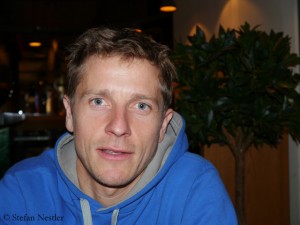

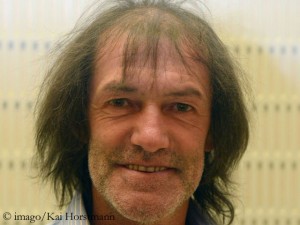
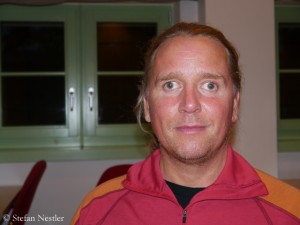

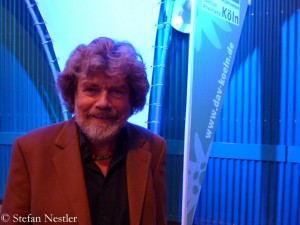
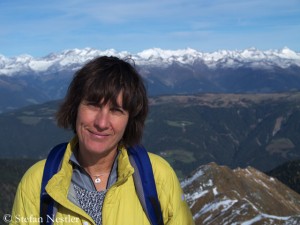
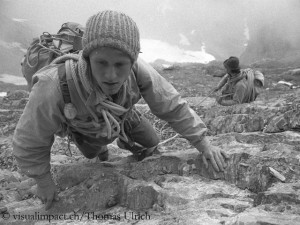
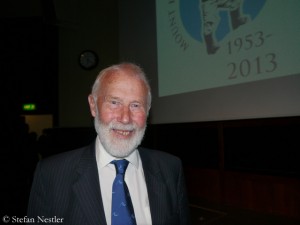

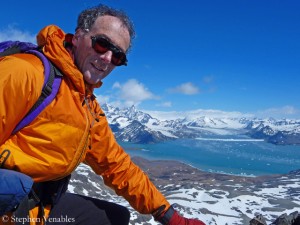

Feedback